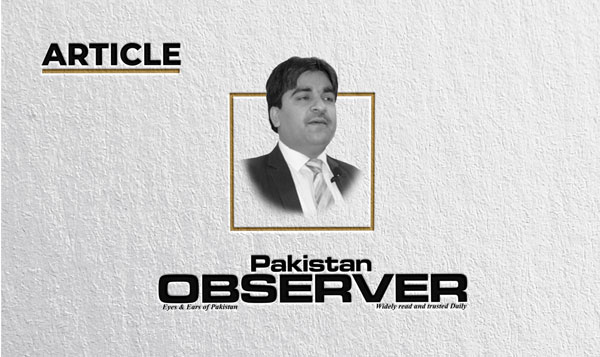Prioritising child education
If there were any doubts about Pakistan’s struggling position, they have been cleared in January 2023.
From parliament house to tea stalls, ‘solutions’ to stabilize Pakistan’s economy are being suggested everywhere.
One remedy which is less talked about but has proven successful across the world is prioritizing child education.
While the immediate measures to secure fuel and ration is important, in the longer run it is people who drive nations.
The more educated and skilled the youth of a nation are, the better chances it has to stand among the developed ones. Low education spending is a reason, Pakistan hasn’t reached its true potential.
Education is a constitutional right of every individual between the ages of 5 to 16 in Pakistan under Article 25-A, of Constitution of Pakistan, but Pakistan has acted less on this commitment.
According to the Economic Survey of Pakistan 2021-22, only 1.77 per cent of Pakistan’s GDP was spent on the education sector in 2021-22.
In other words, Pakistan’s GDP spending on education is lowest in South Asia and also in literary rate.
According to a national research by Aga Khan University’s Institute for Educational Development, more than 90 percent of Pakistani students of primary and lower-secondary grades have very limited grasp of mathematics and science required at their age.
These shortfalls are a reason that Pakistan is ranked 152 out of 189 countries in the Human Development Index (HDI) 2021 ranking.
The severe loss caused by the ravaging waters of 2022 floods are projected to put 9 million additional Pakistanis in poverty cycle.
These floods laid waste to approximately 18,000 schools across the country. This situation will result in more drop outs and increased child labour.
Pakistan already has the 2nd largest population of out-of-school children (age 05 to 16) in the world.
This number amounted to 22.8 million as of 2018. According to Pakistan Labour Force Survey 2017-18, 8.2% children aged 10-14 are engaged in child labour and 32.6% children aged 15-19 are working.
Leaving at education at early age means less mental and technical skills and hence lower wages at work.
During the current financial crisis, all eyes are looking towards government to make efforts in revival of IMF Programme which includes fulfilling the commitments required by the international body.
There’s a need for state and public to realize that Pakistan’s international commitments related to education are also important for its own benefit.
Pakistan was among the first countries to adopt Sustainable Development Goals and has also signed Incheon Declaration and Framework for Action for the implementation of SDG 4 in 2015.
As per this declaration, the member states have committed to spending 4 to 6% of their Gross Domestic Product (GDP) or 15 to 20% of their annual public expenditure on education.
Children’s education should remain utmost priority of the Federal and Provincial Governments and all political rivalries should be cast side during this time of need.
It is also duty of the public to realize importance of child education. Voting criteria during this election year should be based on education.
‘Roti, Kapda, aur Makan’ are fundamental human rights but what makes them attainable and sustainable is education.
Therefore for 2023 and onwards, let’s take a leaf out of our childhood and rate our government and policymakers on how we used to get rated as children ie performance in education.
—The writer is Programme Manager, Society for the Protection of the Rights of the Child, SPARC, Islamabad.










